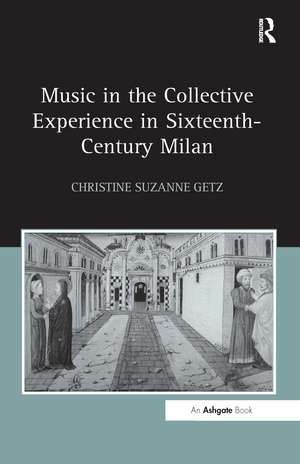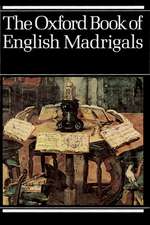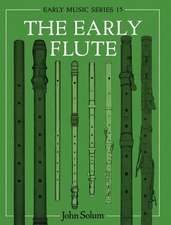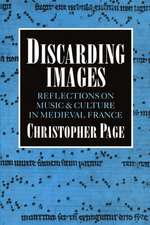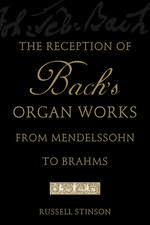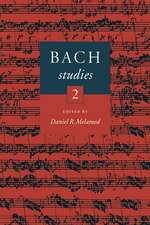Music in the Collective Experience in Sixteenth-Century Milan
Autor Christine Suzanne Getzen Limba Engleză Paperback – 19 oct 2016
| Toate formatele și edițiile | Preț | Express |
|---|---|---|
| Paperback (1) | 338.33 lei 43-57 zile | |
| Taylor & Francis – 19 oct 2016 | 338.33 lei 43-57 zile | |
| Hardback (1) | 825.63 lei 43-57 zile | |
| Taylor & Francis – 10 feb 2006 | 825.63 lei 43-57 zile |
Preț: 338.33 lei
Preț vechi: 386.77 lei
-13% Nou
Puncte Express: 507
Preț estimativ în valută:
64.75€ • 67.19$ • 54.12£
64.75€ • 67.19$ • 54.12£
Carte tipărită la comandă
Livrare economică 17-31 martie
Preluare comenzi: 021 569.72.76
Specificații
ISBN-13: 9781138262829
ISBN-10: 113826282X
Pagini: 328
Dimensiuni: 156 x 234 mm
Greutate: 0.45 kg
Ediția:1
Editura: Taylor & Francis
Colecția Routledge
Locul publicării:Oxford, United Kingdom
ISBN-10: 113826282X
Pagini: 328
Dimensiuni: 156 x 234 mm
Greutate: 0.45 kg
Ediția:1
Editura: Taylor & Francis
Colecția Routledge
Locul publicării:Oxford, United Kingdom
Cuprins
Contents: Preface; Forging a modern civic identity: music for the Battle of Pavia; From ducal to Gubernatorial ceremonial; The civic ceremonial at the Duomo of Milan; Music in the civic processions and triumphal progressions; Instrumental music and musicians under the early governors; The collective culture of secular song; Public devotion in post-Tridentine Milan; Appendices; Bibliography; Index.
Notă biografică
Christine Suzanne Getz is Assistant Professor at the Department of Music, University of Iowa, USA.
Recenzii
’... a comprehensive view of music making in the region. Getz draws on much previously unknown archival material, as well as dicussing significant quantities of music, most of it unavailable in modern editions....much of the information she provides is extremely valuable, and some of it fascinating... Professional scholars of sixteenth-century music will find this book useful...' Notes ’Getz has presented an abundance of information on musical life in Milan; her work should serve as a helpful aid to further research.’ Renaissance Quarterly ’Through rich archival research, Getz succeeds in illuminating a diverse world... One of the strengths, and novelties, of this book is in its detailed reconstruction of the practical organization of musical institutions...’ Urban History ’In her valuable study of the diverse forms, genres and avenues for music, Christine Getz makes a broad survey of Milan's rich musical life... The book is generously stocked with musical examples and tables that list the contents of many of the printed musical anthologies and provide the names of singers and instrumentalists... useful as a reference guide to the musical life of Milan in the age of the Sforzas and Borromeo.’ Sixteenth Century Journal ’This is a useful book, with its principal strength in its wealth of material and the careful work and commitment that has gone into its pages... Christine Getz’s book will serve as an excellent source of material, providing an overview of the subject based on much original archival research.’ Music & Letters
Descriere
Using archival documents, music prints, manuscripts and contemporary writing, Getz examines the musical culture of sixteenth-century Milan. The book investigates the musician's role as an actor and a functionary in the political, religious, and social spectacles produced by the Milanese church, state and aristocracy within the city's diverse urban spaces. Furthermore, it establishes a context for the numerous motets, madrigals, and lute intabulations composed and printed in sixteenth-century Milan by examining their function within the urban milieu in which they were first performed.
